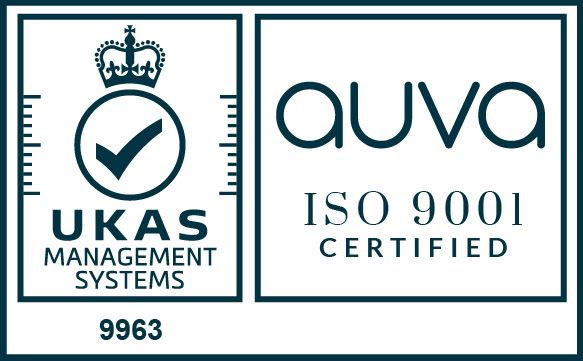Thermistor temperature sensor technical reference information
In our thermistor technical reference section you will find resource material covering all aspects of thermistors, from basic theory to types of thermistors, with further links to more detailed information.
If you have a question that isn't answered here, why not ask us via the contact form or call us.
Table of contents
4. What is B (Beta) constant (B value) in a thermistor
8. Benefits of Thermistors over other temperature sensors
9. RTDs vs Thermistors Comparison Video
10. What different types of thermistor temperature sensors are available?
11. Made to order Thermistor probes
12. Thermistor Resistance and Accuracy Specifications
1. What is a Thermistor?
A thermistor is semiconductor device, which is a temperature sensitive resistor, whose resistance varies with temperature. The name thermistor is and amalgamation of the words ‘thermal’ & ‘resistor’.
2. Thermistor Symbol

3. How do Thermistors work?
Thermistors operate over a relatively small temperature range compared to other temperature sensors, such as RTDs and Thermocouples. They are generally very accurate, repeatable, interchangeable and precise within their narrow temperature range, typically 0-200°C.
Thermistors are normally specified at 25°C and have an R-T curve with high nominal resistance values, typically between 1,000 to 10,000 Ω and even higher in some cases.
4. What is B (Beta) constant (B value) in a thermistor
As it is a non-linear device the B constant in a thermistor is needed to identify it. This is the relationship in resistance in a thermistor between two specified points, normally 0-50C, 25/50C, 25/85C and is specified in Kelvin (K) which is calculated using the formula below (Fig 3.)
Fig 3. b = Ln(R t1/ Rt2) / (1/T1 – 1/T2)
This means in a 10,000 Ω (R25) thermistor, the B value can be 3435K. However, another manufacturers 10,000 Ω thermistor can have a B value of 2976K.
Therefore thermistors can have the same reference resistance of 10,000 Ω at 25 Deg C (R25) but can have different B values, so both values are needed to identify a thermistor.
Another way to calculate the Thermistor RT Curve is to use the Steinhart-Hart method. Which is explained in detail here
5. Typical Thermistor Element
A typical thermistor element when constructed as a temperature measurement probe only requires 2 wire connection due to the relatively low resistance of the lead wire.

6. NTC Thermistors
Negative temperature coefficient (NTC) thermistors have a resistance which reduces as the temperature rises (fig 1.). They are used for resistance thermometers in temperature measurement and all Sterling Sensors assemblies are made using this type of thermistor.

Fig 1. (NTC Thermistor graph)
7. PTC thermistors
Positive temperature coefficient thermistors have a resistance which rises as the temperature increases (Fig 2.) and are not used for temperature measurement. They are ideal as current and temperature limiting devices for circuit protection, such as Lithium batteries.

Fig 2. (PTC Thermistor graph)
8. Benefits of thermistors over other temperature sensors
Thermistor advantages and disadvantages
Advantages
• Highly accurate
• Low cost
• Repeatable
• Very responsive to changes in temperature
Disadvantages
• Narrow working temperature range (Typically 0-200°C) compared to other sensors such as RTDs and Thermocouples
• Susceptible to self-heating errors
• More fragile as they are semiconductor devices
• Extremely non-linear
9. RTDs vs Thermistor comparison video
A practical guide to help you choose the right product for your application.
10. What different types of Thermistor temperature sensors are available?
Thermistors
We a manufacture a range of NTC thermistor temperature sensing probes using high accuracy, interchangeable elements with excellent long term stability.
Thermistor probes can be supplied in 1k to 100k R25 values with various Beta values and tolerances on request. Our standard range uses a 10k NTC element and we can design and fabricate products to your specifications. Whatever your needs, Sterling Sensors will be able to provide a thermistor option for your application.
Fabricated Thermistors
This range of thermistor temperature probes uses fabricated sheaths to protect the thermistor element.
They are available with your choice of NTC thermistor element with a wide range of terminations, such as lead wires and a variety of plugs to suit a wide variety of applications.
General Purpose Thermistors
Our general purpose thermistor temperature sensor range covers products for diverse applications, such as; indoor and exterior ambient temperature measurement, bearing sensors and bolt sensors.
Hand Held Thermistors
Sterling Sensors manufacture a wide range of handheld thermistor sensors for use with digital handheld thermometers for surface, air or insertion temperature measurement in various applications such as food, water, beverage, cold storage facilities or environmental monitoring
11. Made to order thermistor probes
As a specialist manufacturer, Sterling Sensors currently make thermistor probes to order for many UK and international customers at our purpose built factory in Manchester, UK. They can be made to your specification or we can propose a design, whether it's a one-off or a mass production run.
Discuss your application with our experienced sales engineers, who can guide you through the design and build of your thermistor sensors to ensure you find the right solution for your application.
12. Thermistor Resistance and Accuracy Specifications
Below is a table for our standard range of thermistor elements

Thermistor RT Reference Table
The PDF documents listed below have a table giving accurate resistance of Ohms per degree (°C) for thermistor reference

Further information
For full technical characteristics of thermistors visit https://en.wikipedia.org/wiki/Thermistor
For more information on the history of thermistors visit http://www.temperatures.com/thermistors.html
 Made in the UK
Made in the UK









